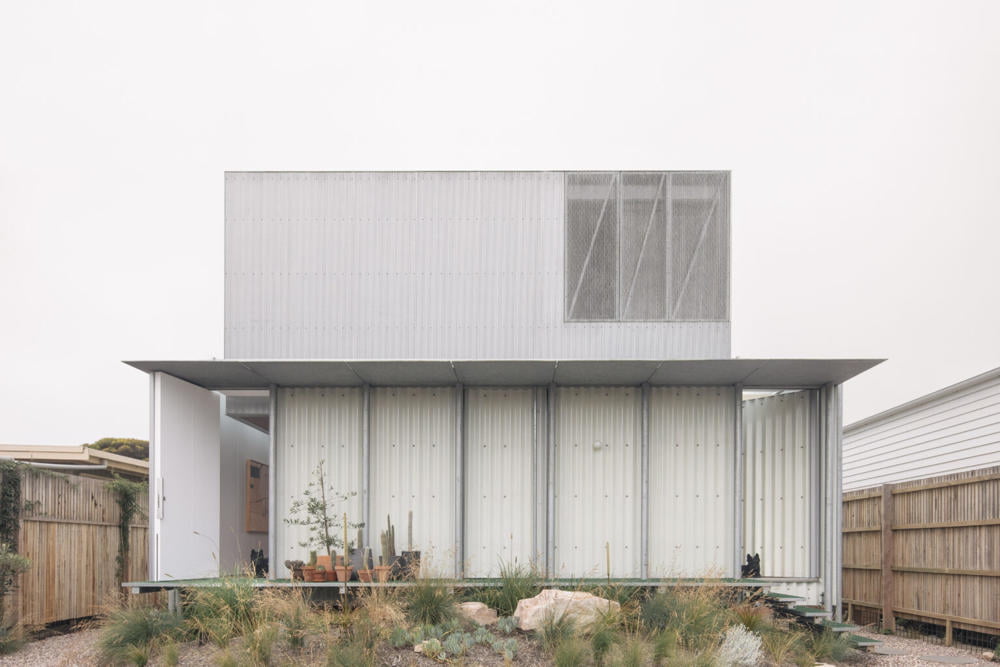
Celebrating its fortieth year of architecture and design, Australian design practice Hayball is pioneering an Australian-first initiative to measure and quantify the social value of its projects across all sectors.
Working with the Australian Social Value Bank (ASVB), the partnership aims to conceptualise an industry-first measurement framework that will make it easy to demonstrate and evaluate the impact of design on people and communities, calculated through both qualitative data and a monetary value.
With a current portfolio spanning over 60 per cent of social value projects, Hayball is utilising its recently completed work as Executive Architect of Nightingale Village and Developer-Design Architect for one of the six buildings in the precinct, CRT+YRD, as a case study to formulate a measurement tool for the practice.
With no quantitative tools currently in place to measure the social value of projects in Australia, the partnership seeks to establish a benchmark for the industry at a time when design is increasingly recognised as having a direct impact on the quality of lives and communities.
As outlined in the federal government’s recently released Measuring What Matters whitepaper, the quality of life and wellbeing of the nation, rather than just GDP, is being seen as a national priority.
As such, the final paper to be released in late 2023, is anticipated to see a Wellbeing Framework established across Australia, which will subsequently require the measurement of wellbeing across projects in the built environment.
For Hayball, creating a social value measurement tool that communicates the link between good design, social outcomes and financial spend in a tangible way, will also advocate a compelling argument for industry stakeholders to embed social value as a metric of project success.
Hayball Co-Managing Principal Sarah Buckeridge said the longer-term impact that the built environment had on people’s lives was fundamental to understanding the success of Hayball’s places and projects.
She said: “Our ultimate goal with this study is to have a framework and measurement tool that can be utilised across sectors for comparison and engagement with our peers in the Australian architecture and design industry.
“We hope that the pilot study of CRT+YRD in the Nightingale Village will start a meaningful conversation around measuring social value.”
Working with the ASVB to develop a set of industry-specific questions and calculations, the pilot study will leverage post occupancy data of CRT+YRD’s residents to determine whether the project achieved a set of design outcomes that attempted to enhance the wellbeing of residents – such as community engagement, feeling of safety and adaptability of housing.
Once collected, the data will be used to project the social value created after a year of moving into development.
On the partnership, Executive Officer of Australian Social Value Bank Min Seto said: “The ASVB is the largest bank of methodologically consistent and robust social values ever produced in Australia.
“Using Australian datasets, we’ve successfully been able to put a well-researched economic value on the improvements in the wellbeing of Australians created by different social outcomes.
“It’s exciting to see the measurement of social value progressing within Architecture in Australia; it will mean that impacts on the wellbeing of people and the planet will be considered from the very beginning of projects, in the design phase.
“The pilot study of CRT+YRD will allow us to understand the social value that can be created through architecture and design based on evidence, rather than a gut feeling. Understanding that the built environment plays a significant role in the wellbeing of communities, this partnership will pave the way for a useful framework to improve our spaces and places for society.”
Notably, Hayball has seen a 250 per cent increase in social infrastructure projects since 2012, demonstrating the importance, need and desire for a framework that adequately measures the impacts of the built environment on people’s lives.
Hayball Co-Managing Principal Tom Jordan said: “The social value of design relies on the level of wellbeing produced as a result – this can be through designing healthier, more active and safer communities as well as consideration of ethical procurement of supply chains and embedded resilient and environmentally sustainable practices.
“Furthering this research in Australia directly correlates to our vision to create socially and sustainably responsive design for our users.”
For Nightingale’s Chief Executive Officer Dan McKenna, this industry shift had been a long-time coming.
McKenna said: “The Nightingale Housing Model aims to reorient the housing market to focus on good housing outcomes for communities.
“As a Not-For-Profit, we are driven to build homes that foster a sense of community – not simply produce real estate as a commodity.
“Being able to measure the social value in monetary terms will help increase the industry’s appetite to invest in socially and environmentally responsible projects.
“We are thrilled to have CRT+YRD as part of the Nightingale Village used as a case study to determine a tool that can be used to improve projects for longevity and community wellbeing across the nation.”












